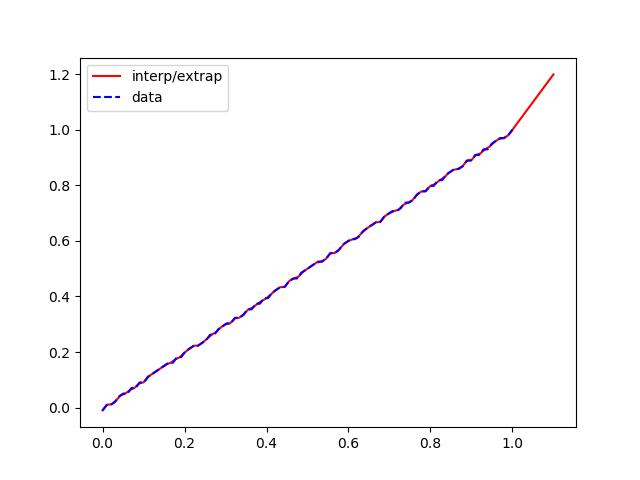`ValueError: A value in x_new is above the interpolation range.`- 除了不升值还有什么其他原因?
问题:ValueError: A value in x_new is above the interpolation range.- 除了不升值还有什么其他原因?
我在 scipy interp1d 函数中收到此错误。通常,如果 x 不是单调递增的,就会产生这个错误。
import scipy.interpolate as spi
def refine(coarsex,coarsey,step):
finex = np.arange(min(coarsex),max(coarsex)+step,step)
intfunc = spi.interp1d(coarsex, coarsey,axis=0)
finey = intfunc(finex)
return finex, finey
for num, tfile in enumerate(files):
tfile = tfile.dropna(how='any')
x = np.array(tfile['col1'])
y = np.array(tfile['col2'])
finex, finey = refine(x,y,0.01)
代码是正确的,因为它成功地处理了 6 个数据文件并在第 7 个时抛出了错误。所以数据肯定有问题。但据我所知,数据一直在增加。很抱歉没有提供示例,因为我无法在示例中重现错误。
有两件事可以帮助我:
-
一些头脑风暴——如果数据确实是单调增加的,还有什么会产生这个错误?关于小数的另一个提示可能在这个问题中,但我认为我的解决方案(x 的最小值和最大值)足以避免它。或者不是吗?
-
是否有可能(如何?)在抛出
ValueError: A value in x_new is above the interpolation range.时返回 x_new 的值及其索引,以便我可以真正看到文件中的问题所在?
更新
所以问题是,由于某种原因,max(finex)比max(coarsex)大(一个是 .x39,另一个是 .x4)。我希望将原始值四舍五入到 2 位有效数字可以解决问题,但它没有,它显示的数字更少,但仍然计入未显示的数字。我能做些什么呢?
解答
如果您正在运行 Scipy v. 0.17.0 或更高版本,那么您可以将fill_value='extrapolate'传递给spi.interp1d,它会推断以适应您位于插值范围之外的这些值。所以像这样定义你的插值函数:
intfunc = spi.interp1d(coarsex, coarsey,axis=0, fill_value="extrapolate")
不过请注意!
根据您的数据的外观和您正在执行的插值类型,外推值可能是错误的。如果您有嘈杂或非单调的数据,则尤其如此。在您的情况下,您可能没问题,因为您的 x_new 值只是_稍微_超出了您的插值范围。
这是此功能如何很好地工作但也给出错误结果的简单演示。
import scipy.interpolate as spi
import numpy as np
x = np.linspace(0,1,100)
y = x + np.random.randint(-1,1,100)/100
x_new = np.linspace(0,1.1,100)
intfunc = spi.interp1d(x,y,fill_value="extrapolate")
y_interp = intfunc(x_new)
import matplotlib.pyplot as plt
plt.plot(x_new,y_interp,'r', label='interp/extrap')
plt.plot(x,y, 'b--', label='data')
plt.legend()
plt.show()

因此,插值部分(红色)运行良好,但由于噪声,外插部分显然无法遵循该数据中的线性趋势。因此,对您的数据有所了解并谨慎行事。
更多推荐
 已为社区贡献126446条内容
已为社区贡献126446条内容







所有评论(0)